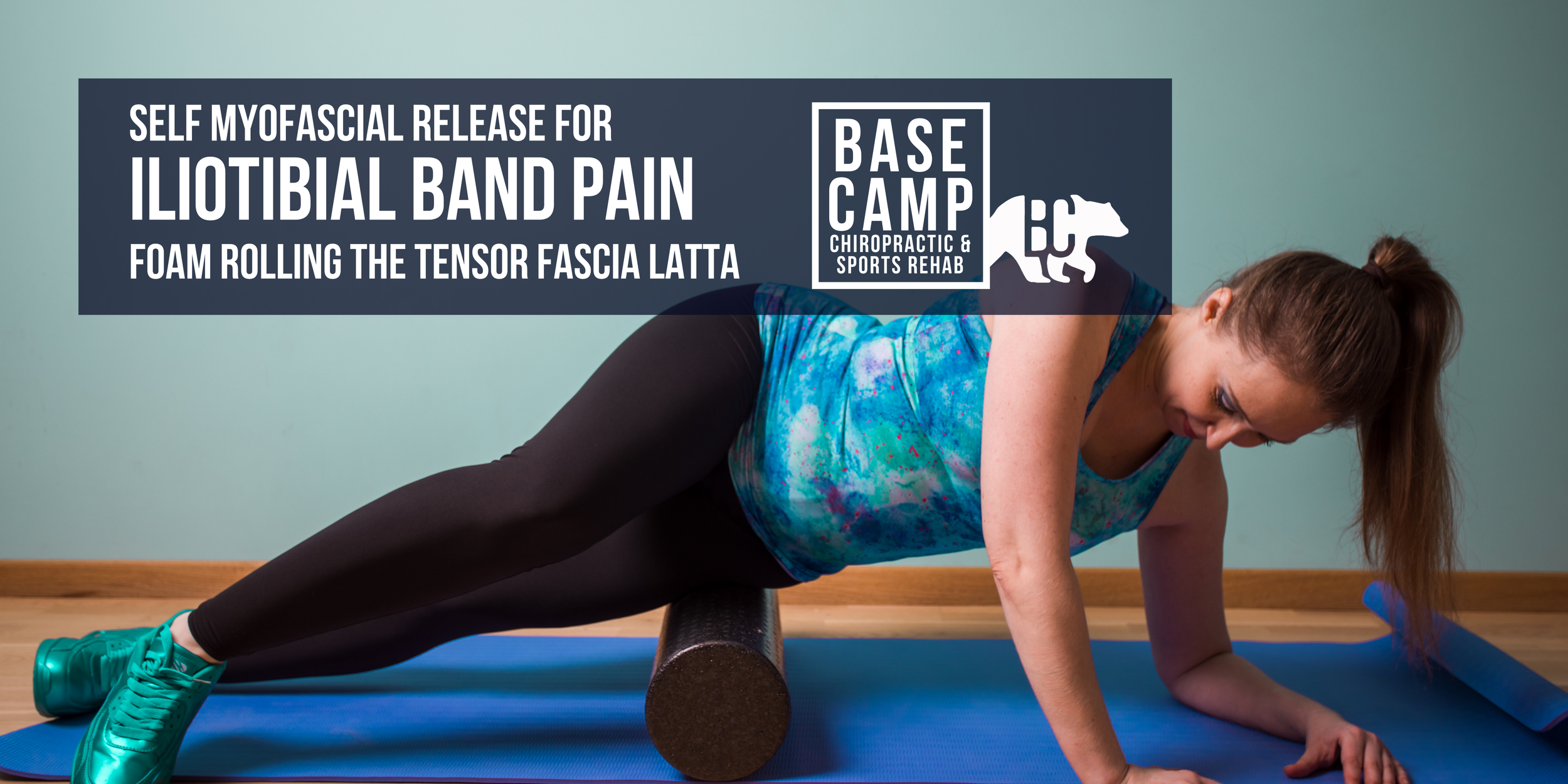Iliotibial Band Pain
The Iliotibial Band (ITB) Pain is a show stopper.
It is the number one cause of lateral knee pain in runners (i.e. pain on the outside of the knee), and can not only end your running season, but it can also interfere with your everyday life.
If you have ever experienced ITB pain, you know how frustrating it can be.
In this article, we will cover what the ITB is, why it’s important, how it gets hurt, and some management recommendations.
What is Iliotibial band pain? And what even is the IT Band?
The IT Band is a length of connective tissue that connects your pelvis and your knee, running along the outside of the thigh. It helps make you more efficient while running by preserving the energy produced when your foot hits the group and reusing it for your next step.
Where the IT Band attaches at the knee can become irritated in many runners. This happens when you either increase your running volume too fast, spend too much time running downhill or run with a really narrow gait. It is particularly prevalent in trail runners because the trail forces our gait to narrow and we tend to spend a LOT of time running down hills (it IS my favourite part of trail running, after all!).
Once IT Band pain starts, it is really hard to get rid of, for a lot of reasons. Primarily though, it is because most runners follow this pattern:
Initial Injury happens
>Offload the tissue by decreasing your running volume.
>>Tissues lose capacity and your fitness goes down, but your pain decreases.
>>>Runner returns to their same activities as before, without properly rehabbing their knee.
>>>> Reinjury… and the cycle continues.
To prevent recurrent knee pain from the IT Band you HAVE TO BREAK THE CYCLE of Injury-Offload-Reinjury.
The good news is that IT Band pain doesn’t mean anything is DAMAGED. It just means that the knee is IRRITATED.
Management and Rehab of Iliotibial Band Pain
So… what should you do about IT Band Pain?
IT Band Pain management takes place in 3 Steps:
1) Calm Stuff Down
The nature of running injuries means that RUNNING VOLUME was the primary cause of the injury. This means that a temporary decrease in running is necessary to help calm down your symptoms, and your pain sensitivity. In the case of IT Band pain, this means avoiding running downhill. Some people can tolerate running on level terrain or using a treadmill on an incline. This helps keep your fitness up while rehabbing the injury.
During this phase we also use foam rolling, stretching, and manual therapy to decrease your pain and keep you as active as you can be. Here are some helpful videos:
Once things have calmed down (usually 2-6 weeks), then we can move on to Step 2 and Build Back Up.
2) Build Back Up
During this phase, we use exercises to increase your strength and tolerance to loading the knee. Here are some of my favourite exercises for rehabbing IT band pain:
Rear Foot Elevated Split Squat: VIDEO
Side Bridge: VIDEO
Box Step Downs: VIDEO
Lateral Lunge: VIDEO
3-Direction Calf Raises: VIDEO
This is just a short list of some of the things we use during the Build phase, but they are the foundation for most of the IT Band rehab programs I put together.
3) Bridge the Gap (getting Back to Running!)
This is both the most fun and most frustrating phase of IT Band rehab because you are going to want to jump back in and hit those trails you were running before the pain started.
This stage is different for each person, depending on their individual needs.
Stage 3 is a gradual process. How Stage 3 goes depends on how patient you can be. It is natural to want to jump back into running the same routes for the same distances at the same pace as you were before the injury. But what we want to do is gradually build your running volume back up over time instead.
If you can do that, not only will you be more successful at rehabbing your injury, you can actually become a faster and stronger runner than you were before the injury.
It is normal to have some bad days, where you feel like you are back to Stage 1. What we want to avoid is multiple consecutive days of flare-ups. Running volume management and terrain choice are essential at this stage.
Author: Dr Mark Murdoch, Chiropractor and Co-Founder at Base Camp Chiropractic and Sports Rehab in Vernon, BC.
Mark Murdoch is a Doctor of Chiropractic with a Master’s Degree in Sports Medicine.
Contact: drmurdoch@basecampclinic.com
Instagram: Base.Camp.Doc






